Santiago Lava-Lizard |
Reptiles of Ecuador | Sauria | Tropiduridae | Microlophus | Microlophus jacobi
Spanish common name: Lagartija de lava de Santiago.
Recognition: ♂♂ 26.8 cm ♀♀ 19.1 cm. Microlophus jacobi is the only lava lizard occurring on Bartolomé, Santiago, Rábida, and six of the surrounding islets of these islands. Males and females of this species differ from each other in size, shape, and coloration. Adult males are easily recognized by their raised middorsal crest. They also have a brown body with scattered black and white blotches, as well as a distinctive black throat. Adult females usually have a mostly uniform brownish body, bright orange face, and a black mark at the shoulder level.
Picture: Adult male. Santiago Island. Galápagos, Ecuador. | |
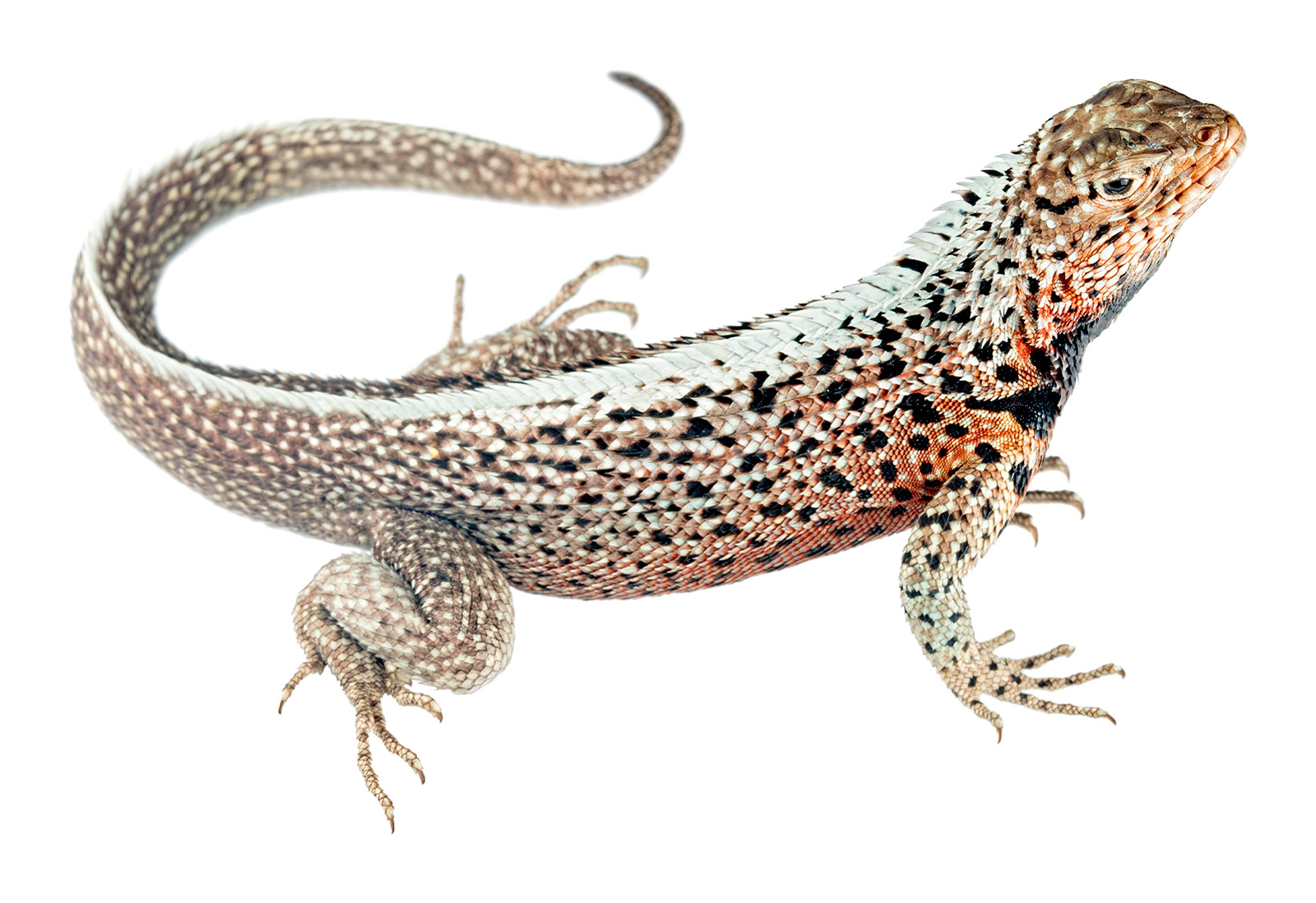 | |
Picture: Adult male. Santiago Island. Galápagos, Ecuador. | |
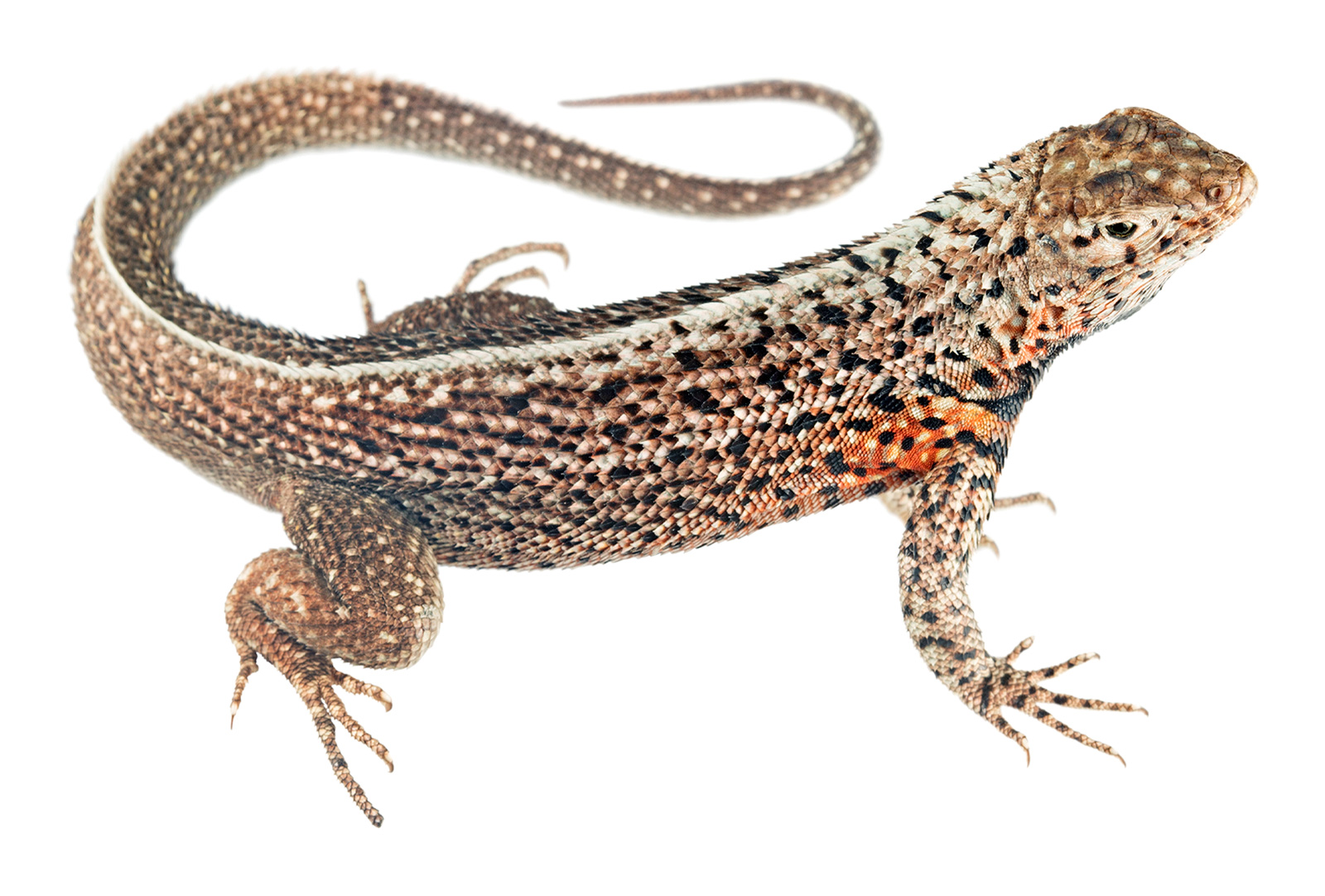 | |
Picture: Adult male. Santiago Island. Galápagos, Ecuador. | |
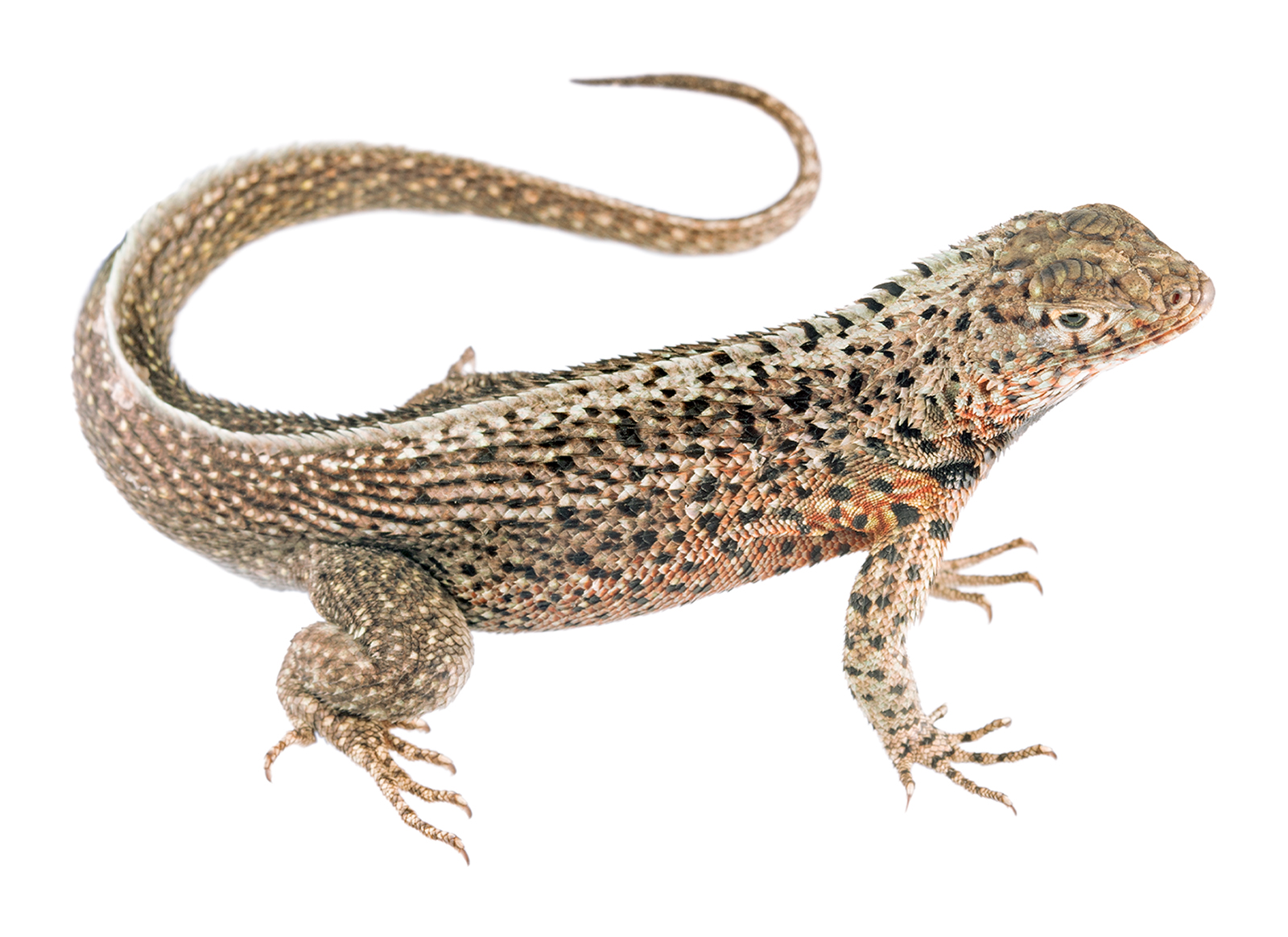 | |
Picture: Adult female. Santiago Island. Galápagos, Ecuador. | |
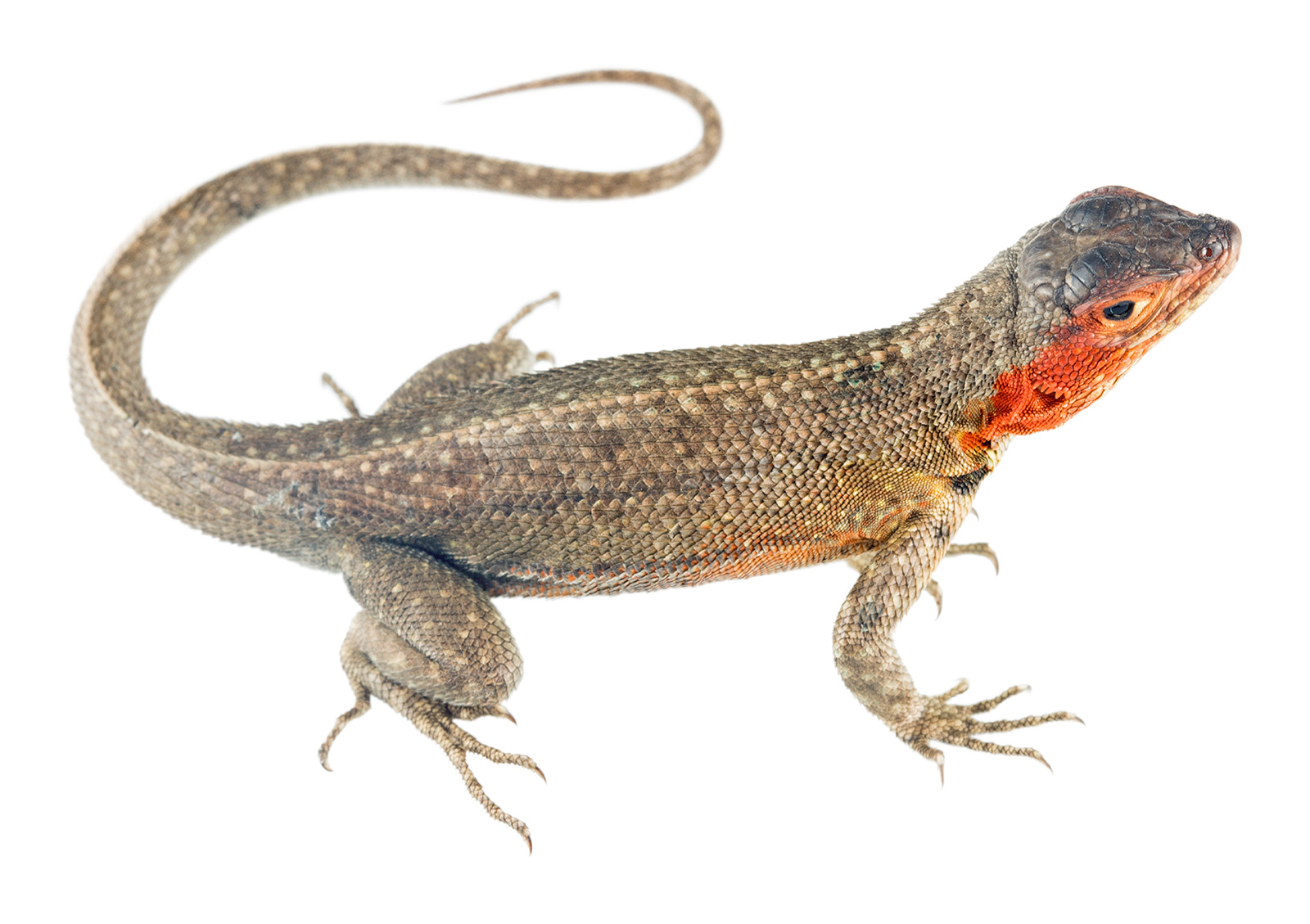 | |
Picture: Subadult female. Santiago Island. Galápagos, Ecuador. | |
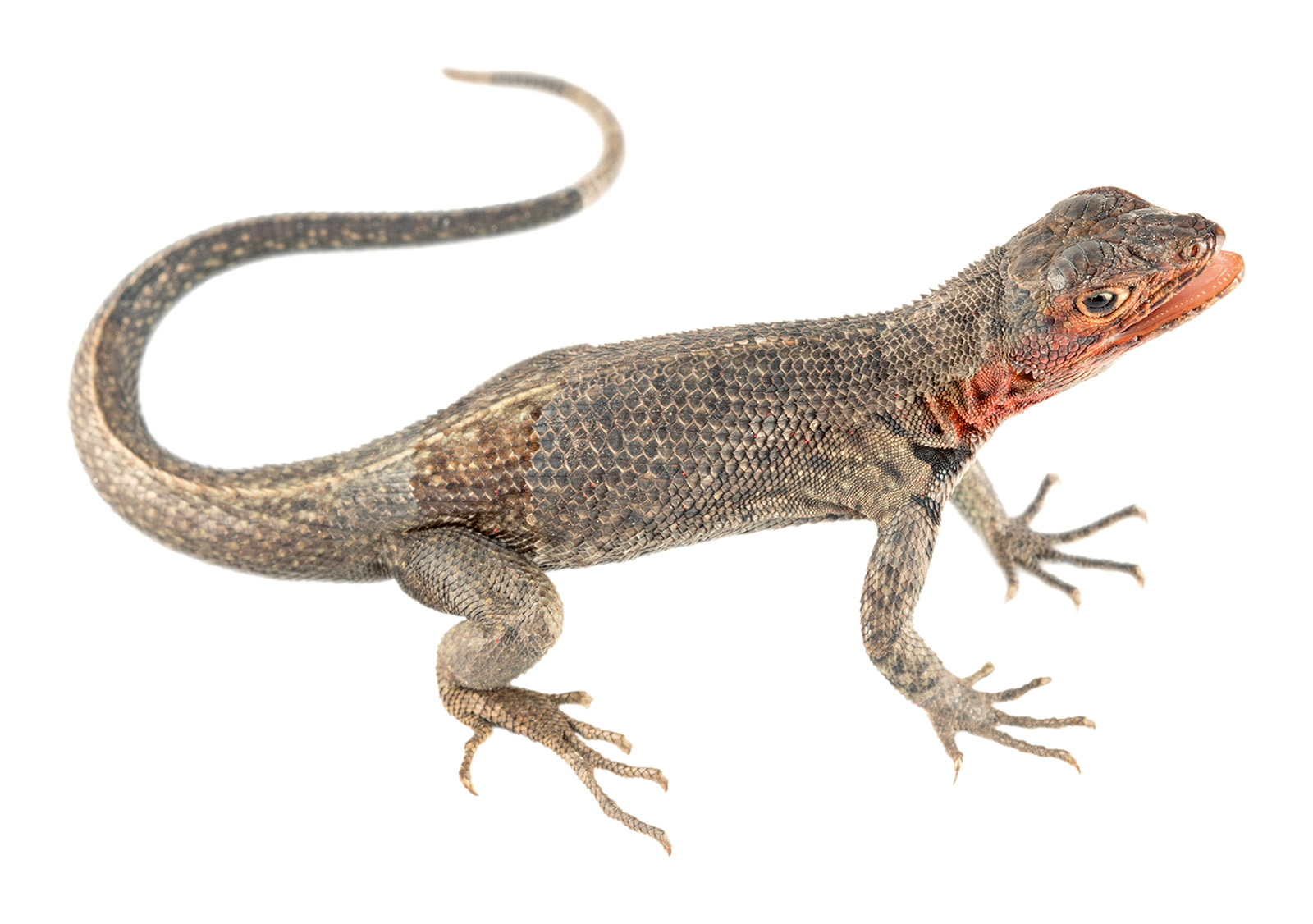 | |
Picture: Juvenile. Santiago Island. Galápagos, Ecuador. | |
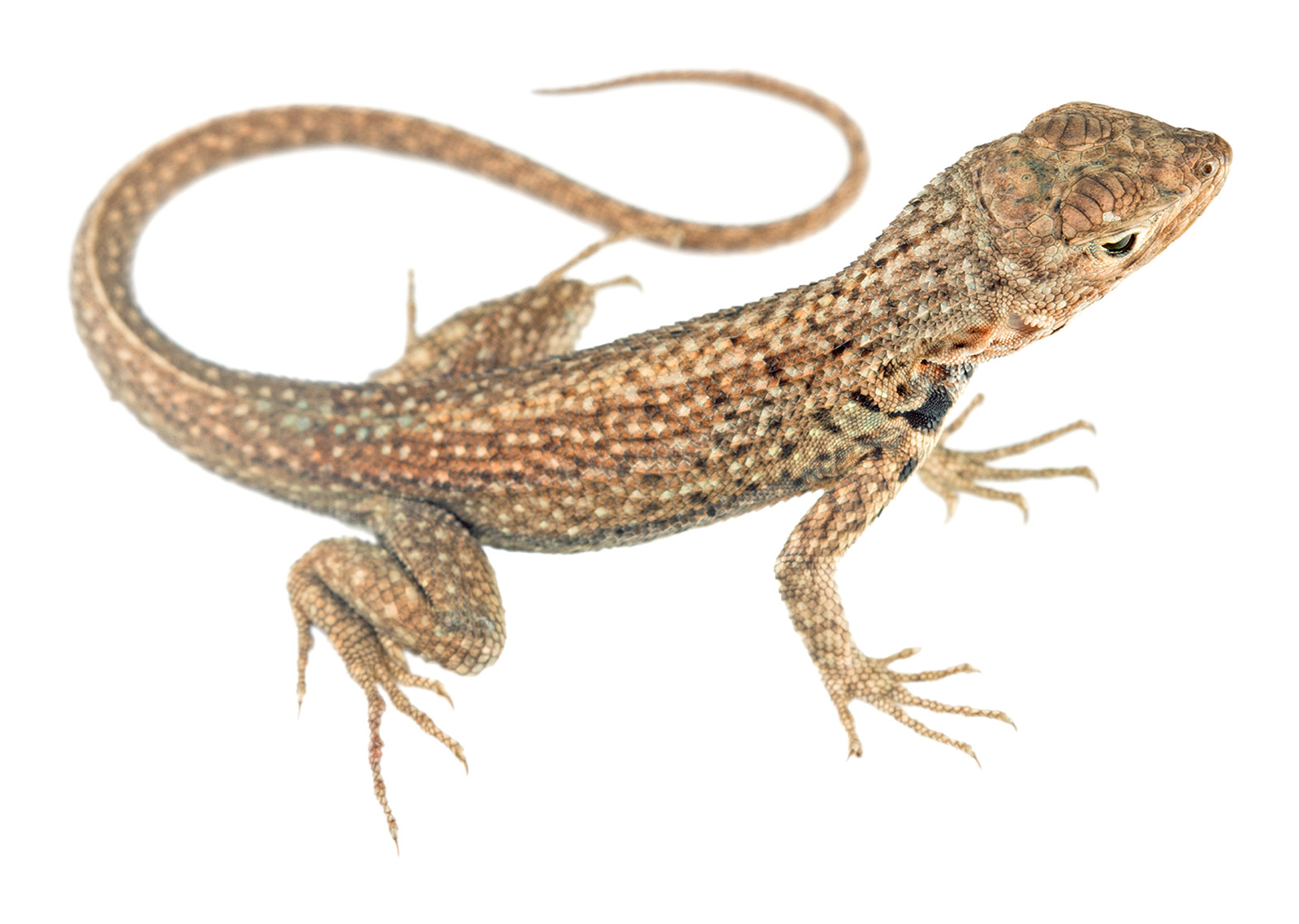 | |
Natural history: Extremely common. Microlophus jacobi is a diurnal lizard inhabiting volcanic rock areas, dry shrublands, and dry grasslands.1 Lizards of this species bask and move on soil, rocks, shrubs, and cacti.1,2 They avoid the hot midday hours by moving into the shade, sitting on surfaces that have not been heated by the sun. Like other lava lizards,3 individuals of M. jacobi spend the night hidden among rocks, beneath soil, and leaf litter. When threatened, Santiago Lava-Lizards flee into crevices or into old Santiago Giant-Tortoise (Chelonoidis darwini) nests.1 If captured, they may shed the tail and bite.1
Individuals of Microlophus jacobi feed on insects and plant material such as leaves, fruits, and seeds.2,4 They are preyed upon by Thomas' Racers (Pseudalsophis thomasi) and by introduced black rats.5,6 Male Santiago Lava-Lizards perform pushup displays and fight with other males to defend territories.1 Females lay 1–3 eggs2,7 in nests excavated in sandy substrate close to rocks or vegetation.8 They also protect the nests from potential predators and from other females.8
Conservation: Least Concern.7 Microlophus jacobi is listed in this category because the species is not facing major immediate threats of extinction. Santiago Island is not populated by humans nor major introduced lizard predators, such as cats, and the island is protected within the Galápagos National Park.7 However, Santiago Lava-Lizards are facing the threat of predation by introduced black rats.
Special thanks to Kim Harrell, our official protector of the Santiago Lava-Lizard, for symbolically adopting this species and helping bring the Reptiles of Galápagos project to life.
Distribution: Santiago Lava-Lizards are endemic to an estimated 463 km2 area on Bartolomé, Santiago, and Rábida islands, as well as six of their surrounding islets: Albany, Rocas Bainbridge 3–6, and Sombrero Chino. Galápagos, Ecuador.
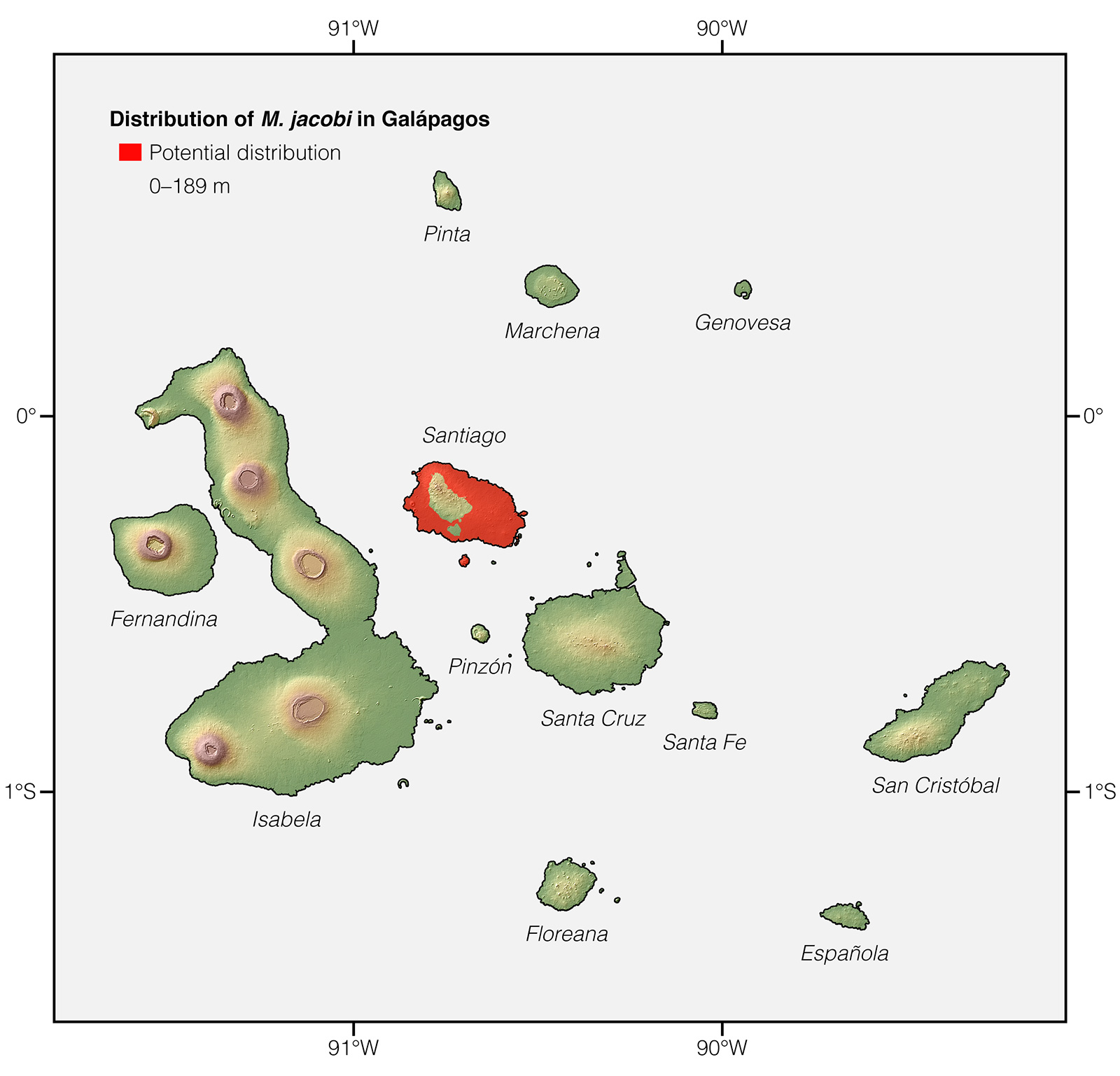
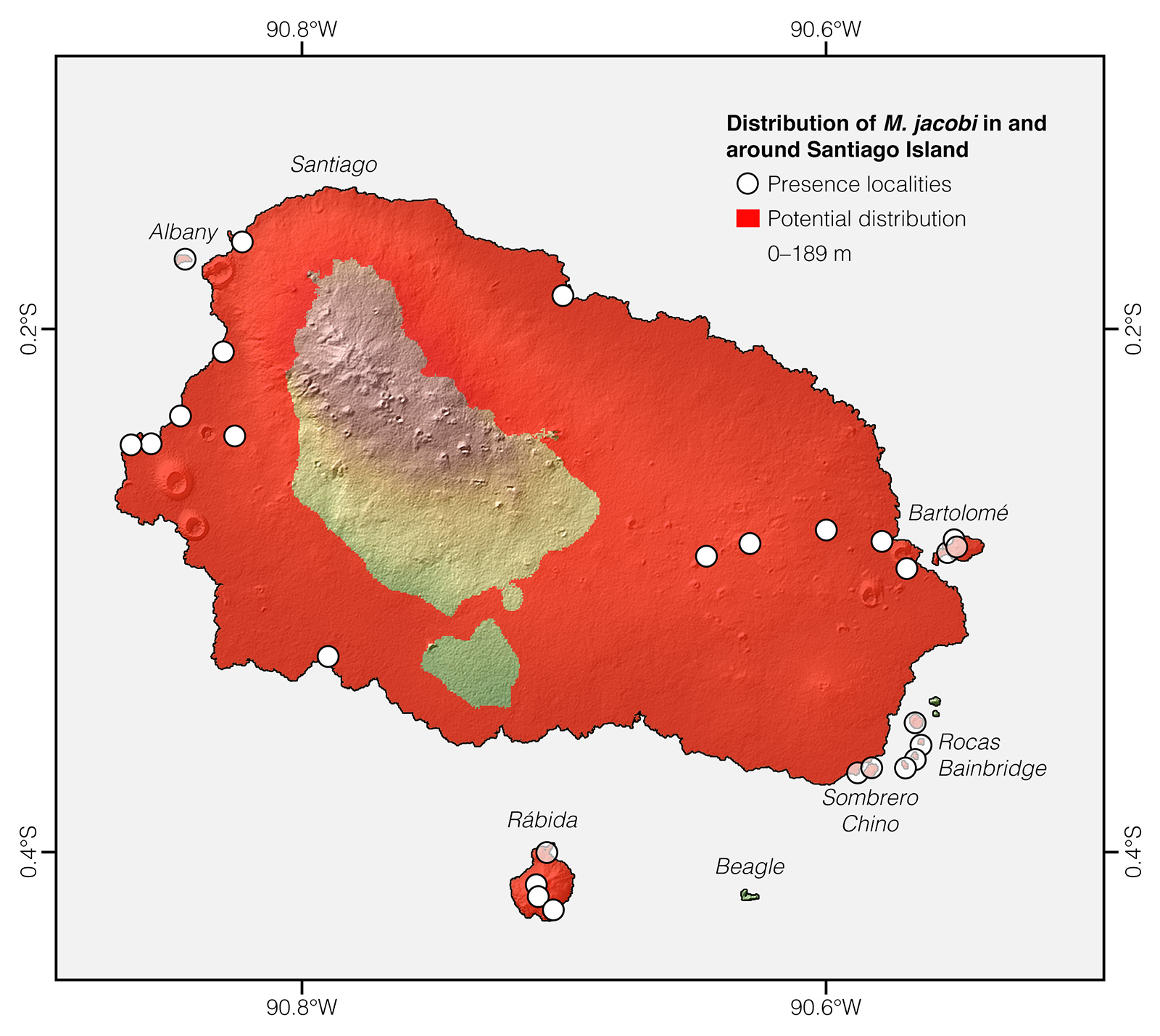
Etymology: The generic name Microlophus, which comes from the Greek words mikros (meaning “small”) and lophos (meaning “crest”), refers to the reduced dorsal crest in another lava lizard species (M. peruvianus).9 The specific epithet jacobi refers to Santiago Island, previously known as James (=Jacobi in Latin) Island.
See it in the wild: Santiago Lava-Lizards can be seen year-round with ~100% certainty on most tourism sites in and around Santiago Island, including Sombrero Chino Islet, Rábida Island, and Bartolomé Island. The best time to look for, and photograph, the lizards is during the first hours after sunrise or right before sunset.
Authors: Alejandro Arteaga,aAffiliation: Tropical Herping (TH), Quito, Ecuador. Gabriela Aguiar, and Juan M GuayasaminbAffiliation: Laboratorio de Biología Evolutiva, Universidad San Francisco de Quito (USFQ), Quito, Ecuador.,cAffiliation: Galapagos Science Center, Galápagos, Ecuador.,dAffiliation: Centro de Investigación de la Biodiversidad y Cambio Climático, Universidad Tecnológica Indoamérica, Quito, Ecuador.
Academic reviewers: Edgar Benavides, John Rowe, and Cruz Márquez.
Photographers: Jose VieiraaAffiliation: Tropical Herping (TH), Quito, Ecuador.,eAffiliation: ExSitu, Quito, Ecuador.
How to cite? Arteaga A, Aguiar G, Guayasamin JM (2020) Microlophus jacobi. In: Arteaga A, Bustamante L, Vieira J, Guayasamin JM (Eds) Reptiles of Ecuador: Life in the middle of the world. Available from: www.reptilesofecuador.com
Literature cited:
- Field notes, Reptiles of Ecuador book project.
- Van Denburgh J, Slevin JR (1913) Expedition of the California Academy of Sciences to the Galápagos Islands, 1905-1906. IX. The Galapagoan lizards of the genus Tropidurus with notes on iguanas of the genera Conolophus and Amblyrhynchus. Proceedings of the California Academy of Sciences 2: 132–202.
- Stebbins RC, Lowenstein JM, Cohen NW (1967) A field study of the lava lizard (Tropidurus albemarlensis) in the Galápagos Islands. Ecology 48: 839–851.
- Hervías-Parejo S, Heleno R, Rumeu B, Guzmán B, Vargas P, Olesen JM, Traveset A, Vera C, Benavides E, Nogales M (2018) Small size does not restrain frugivory and seed dispersal across the evolutionary radiation of Galápagos lava lizards. Current Zoology 65: 353–361.
- Cadena-Ortiz H, Barahona A, Bahamonde-Vinueza D, Brito J (2017) Anecdotal predation events of some snakes in Ecuador. Herpetozoa 30: 93–96.
- Washington Tapia, unpublished data.
- Márquez C, Cisneros-Heredia DF (2016) Microlophus jacobi. The IUCN red list of threatened species. Available from: www.iucnredlist.org
- Burger J (1993) Colony and nest site selection in lava lizards Tropidurus ssp. in the Galápagos Islands. Copeia 1993: 748–754.
- Frost DR (1992) Phylogenetic analysis and taxonomy of the Tropidurus group of lizards (Iguania: Tropidurudae). American Museum Novitates 3033: 1–68.